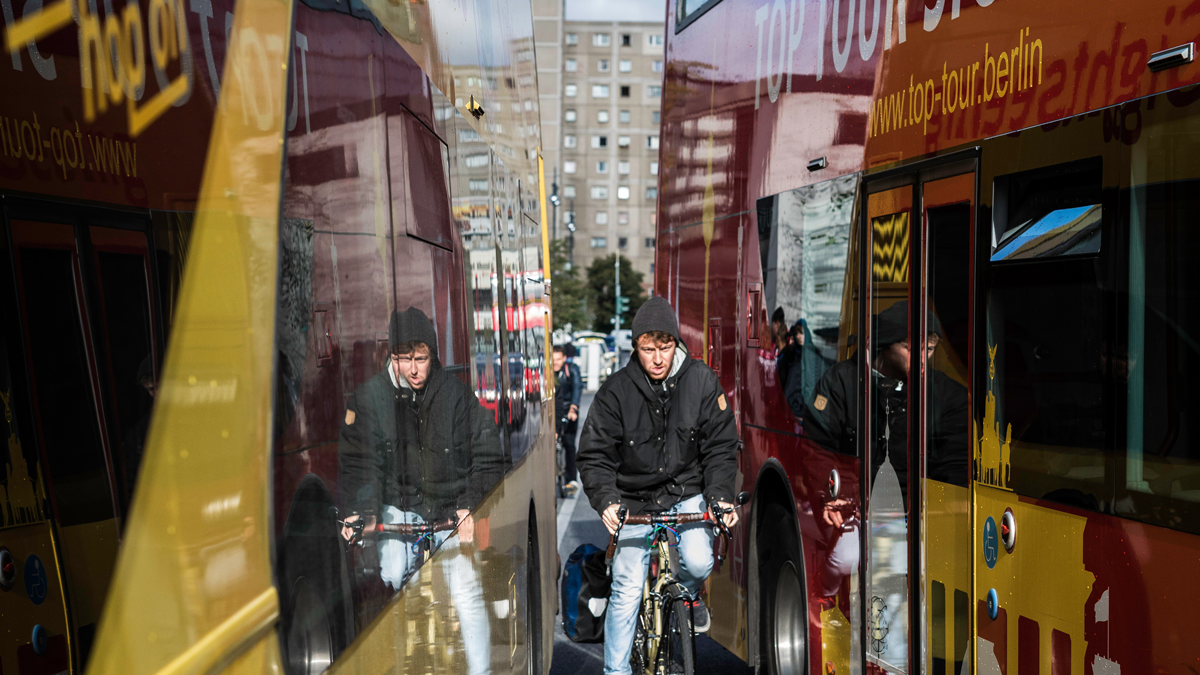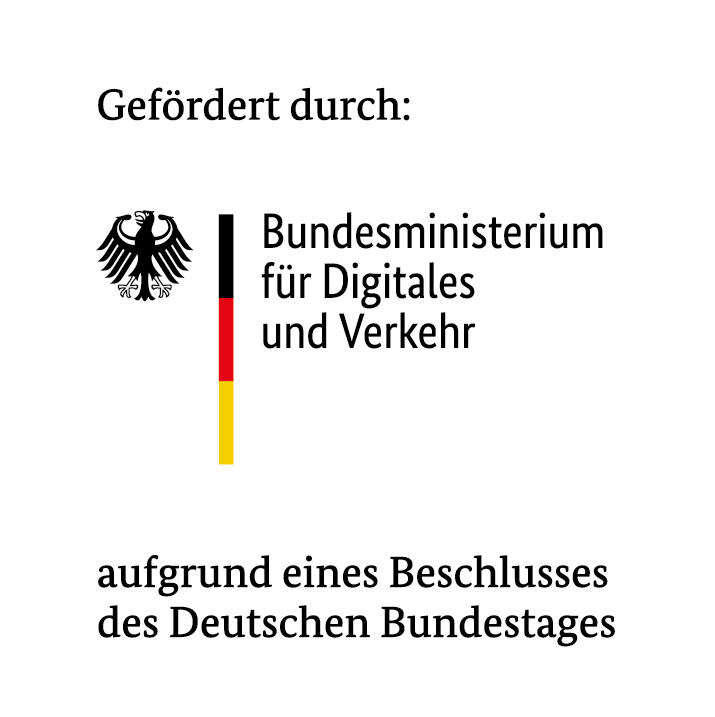A total of eleven RealLabHH subprojects are intended to help answer the following question more effectively: How can digitalization make the transport system more sustainable, safer, comfortable and reliable? A key feature of the project is the continuous and comprehensive involvement of citizens. The planned sub-projects range from establishing a mobility budget instead of using company cars to the creation of a provider-independent mobility platform. Around 30 project partners are developing digital mobility solutions in a common ecosystem for the Hanseatic City of Hamburg by the end of 2021. Fraunhofer FOKUS is participating in an app for particularly vulnerable road users, such as pedestrians, cyclists and users of e-scooters.
Warning of collisions and obstacles
In addition to moving on foot and by bicycle, electrified micromobility, i.e. e-scooters or electric bicycles, constitutes a valuable local contribution to emission-free mobility within the city. These road users, however, are exposed to an increased risk of injury compared to people in cars, buses or trucks - this group is designated as “vulnerable road users” (VRU). This is why the integrated solution from Fraunhofer FOKUS focuses on increasing traffic safety for the VRU. The service should warn the user of a collision with another road user or obstacle via their smartphone, as an example. The central technological building block for this is a highly accurate localization, which so far has had to be developed and tested individually for each app and each type of smartphone.
The Fraunhofer research team of the Smart Mobility business unit processes the smartphone sensor technology to determine position and orientation using Mobile Edge Computing, a cloud infrastructure that is closely connected to the mobile phone user. This “Location-as-a-Service (LaaS)” service can then be used for applications such as the hazard warning system or a traffic light phase assistant (Green Light Optimal Speed Advisory - GLOSA). A challenge here, compared to the localization of a car, is that the smartphone can be located in different places on a bicycle or scooter - e.g. on the handlebars or in the trouser pocket - and large steering movements can make localization more difficult. In a next step, sensor data from vehicles in the vicinity, e.g. from cameras and laser scanners, will be included in order to further improve precision.
Presentation of the results at the ITS World Congress 2021 in Hamburg
The central aim of the RealLabHH project is to draw up recommendations for action for the environmentally and climate-friendly restructuring of the mobility system. At the ITS World Congress 2021, the results and demonstrators of the RealLabHH were presented in and around Hamburg. Supported by the Federal Ministry of Transport and Digital Infrastructure (BMVI), the Free and Hanseatic City of Hamburg hosted the world's largest congress for intelligent transport systems and services, which took place from October 11-15, 2021.
The RealLabHH project is managed by Hamburger Hochbahn AG, runs until the end of 2021 and is funded by BMVI with around 20.5 million euros. The RealLabHH project emerged from the National Platform Future of Mobility (NPM).

